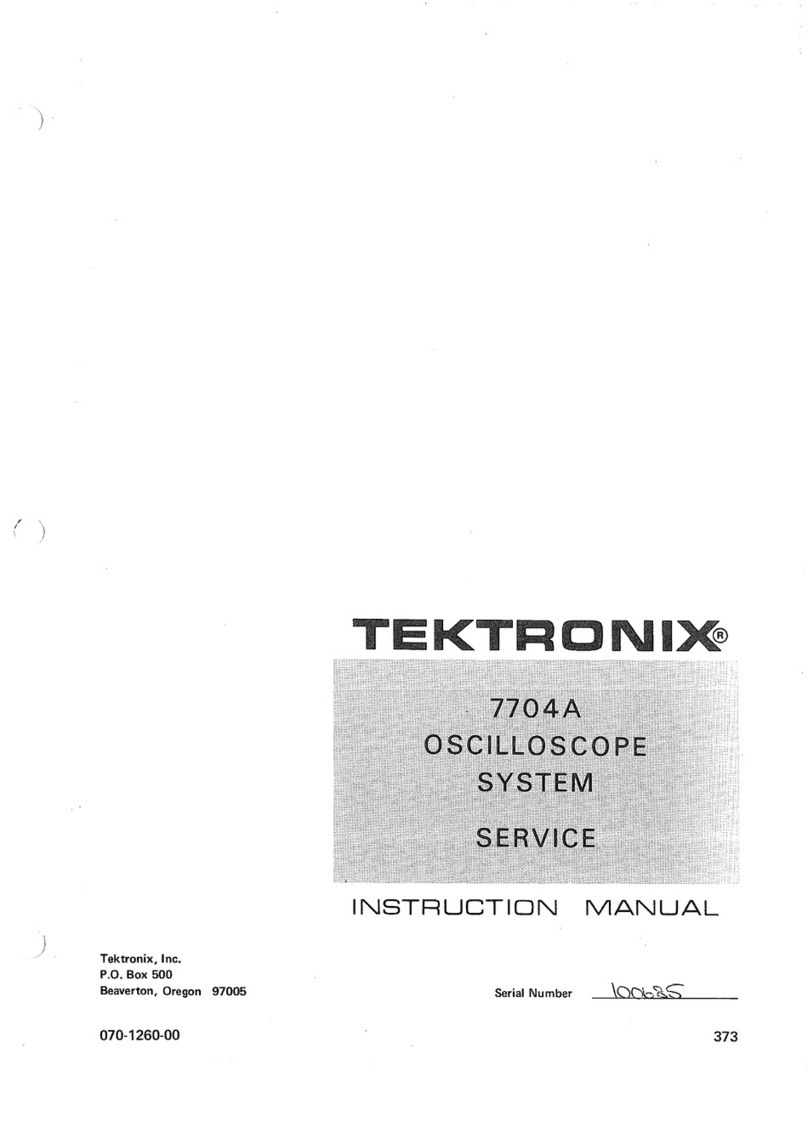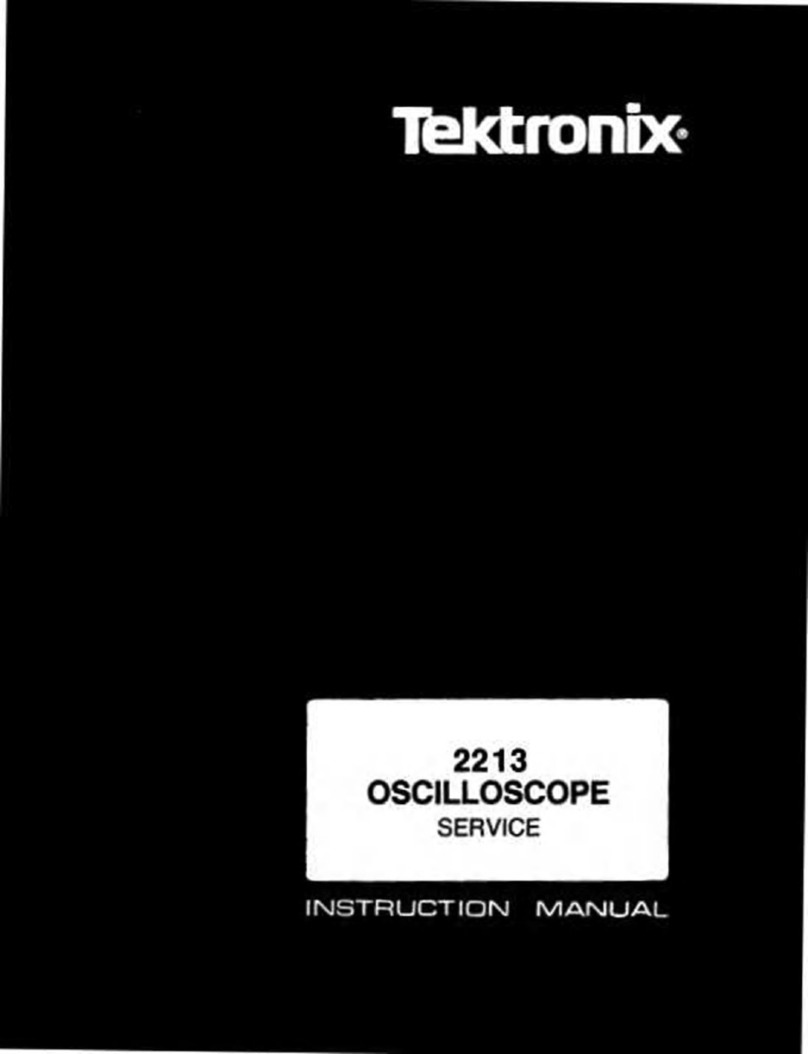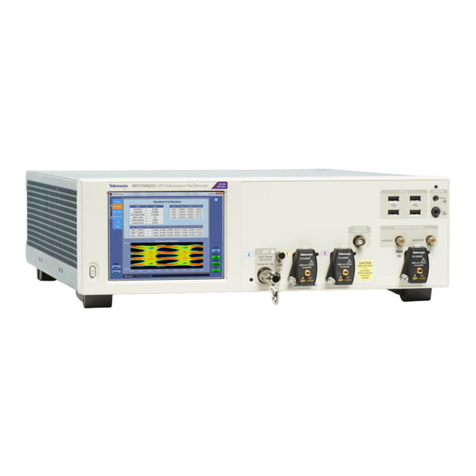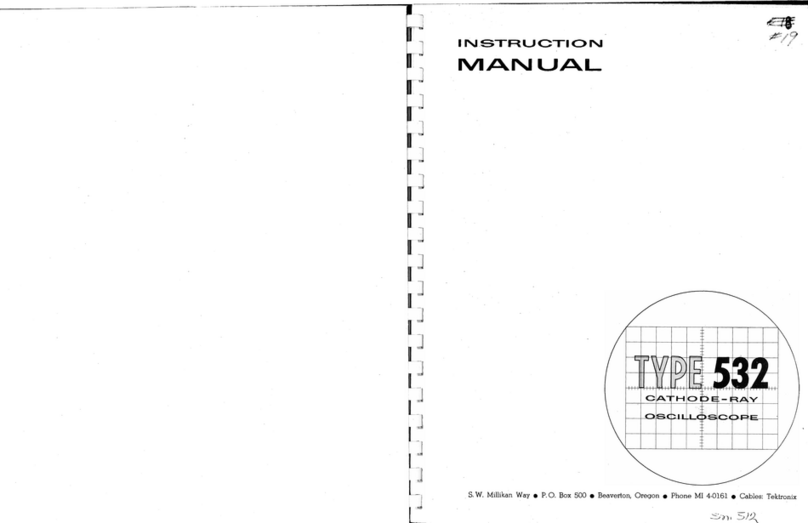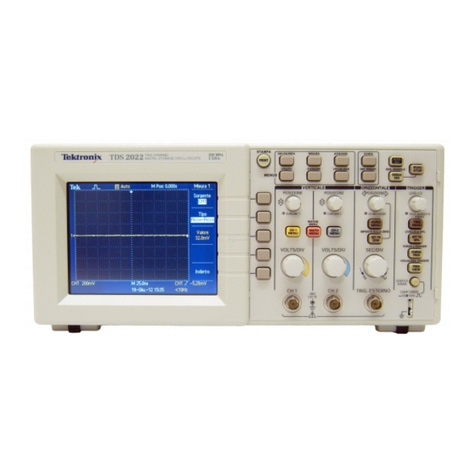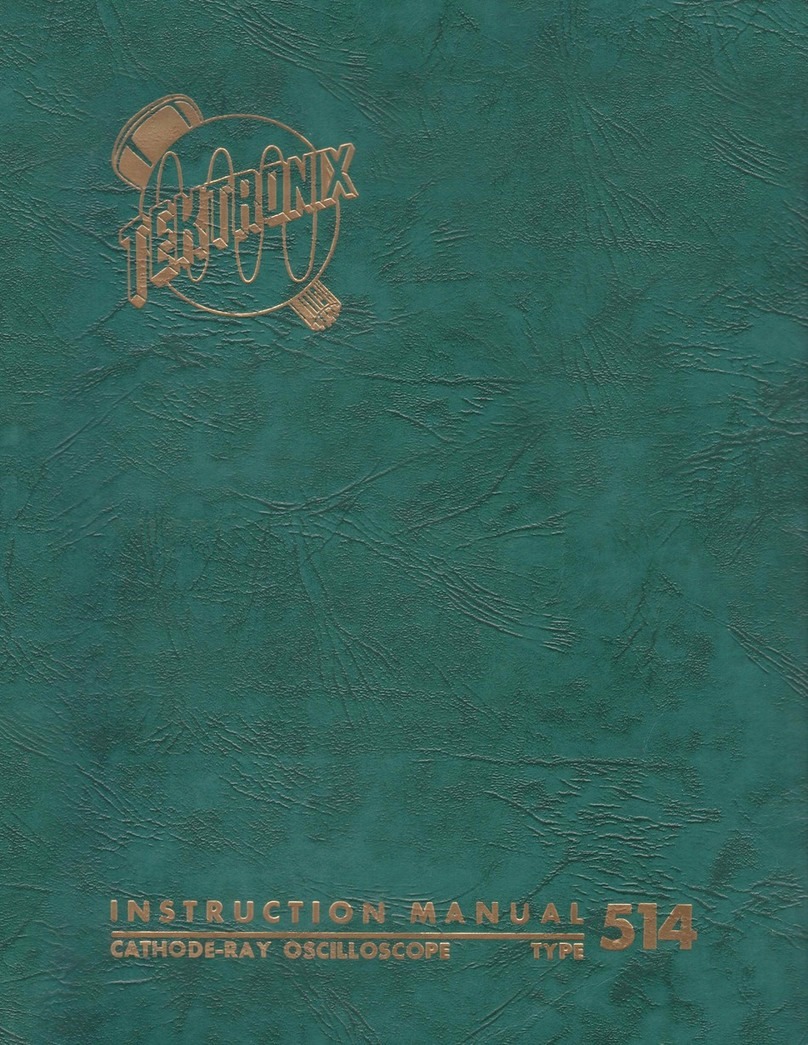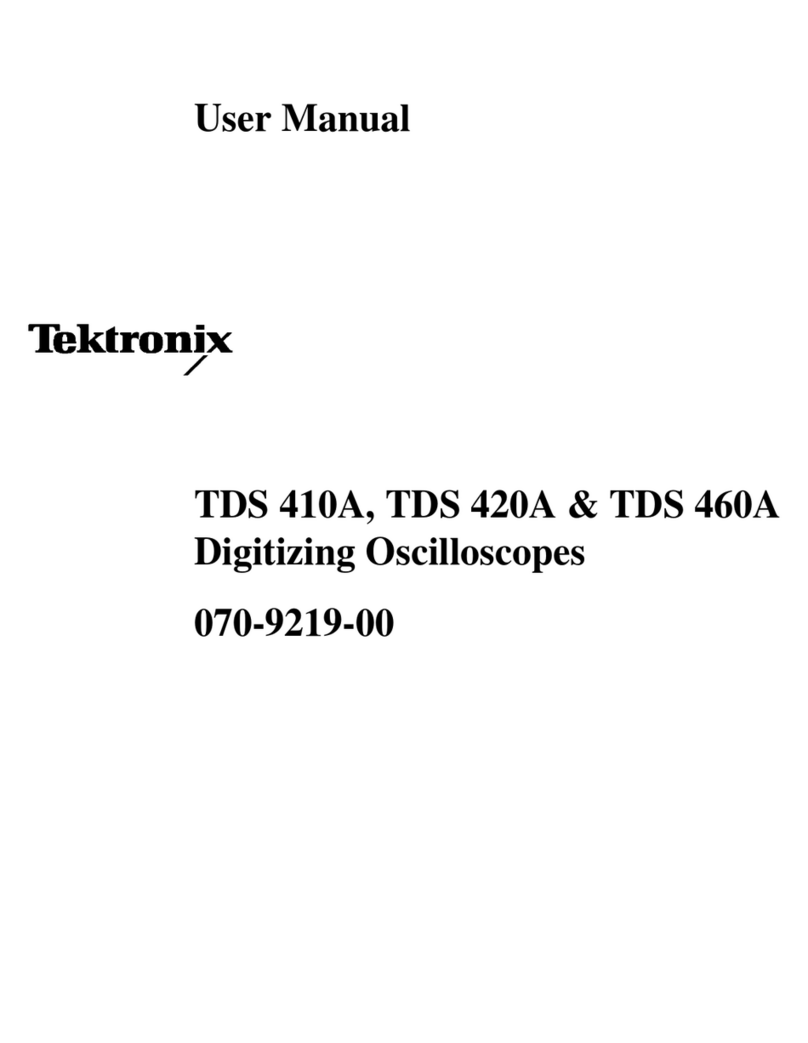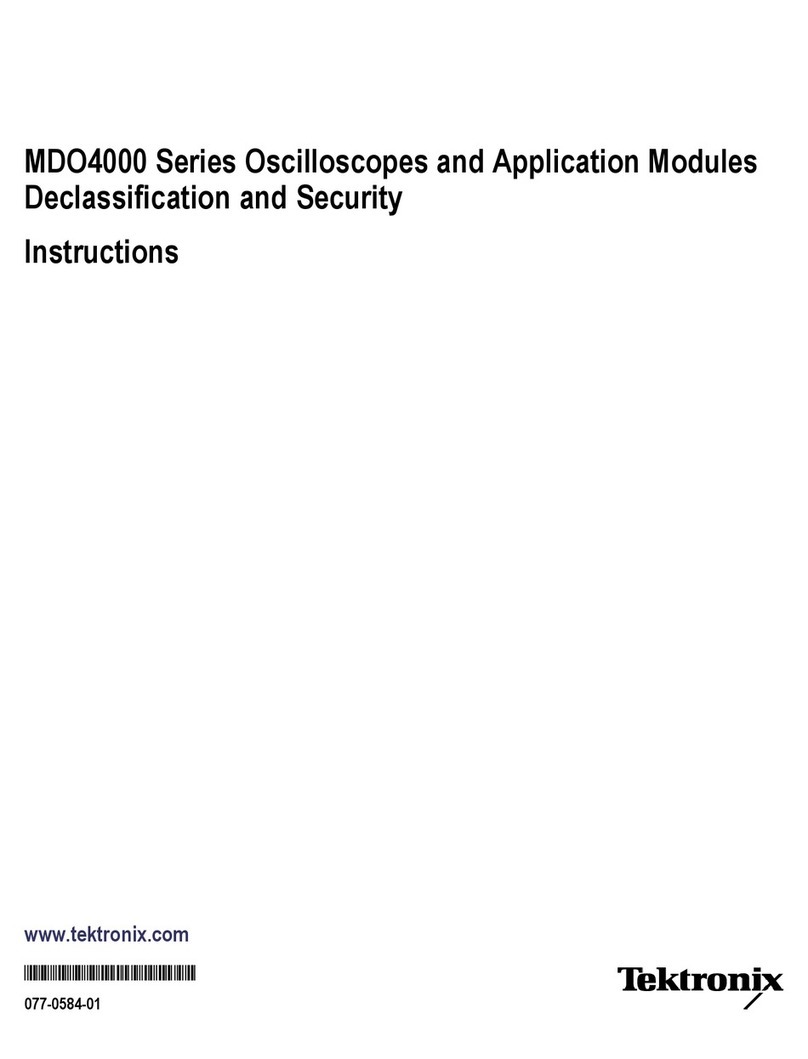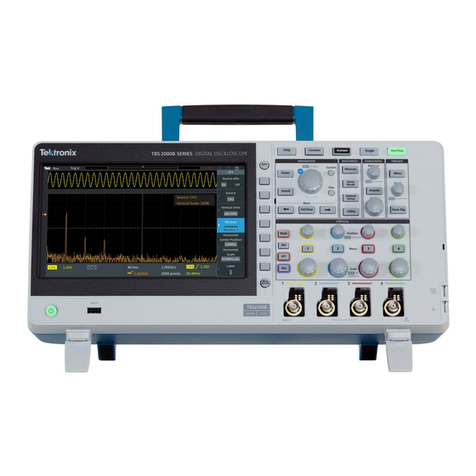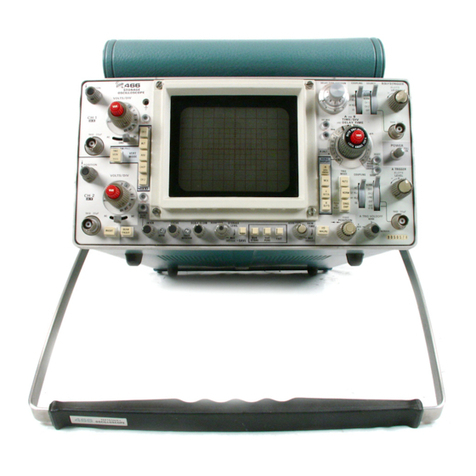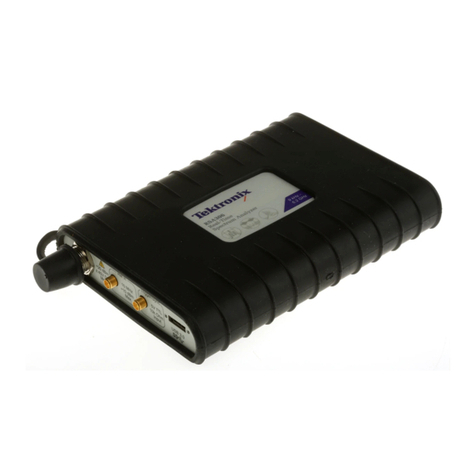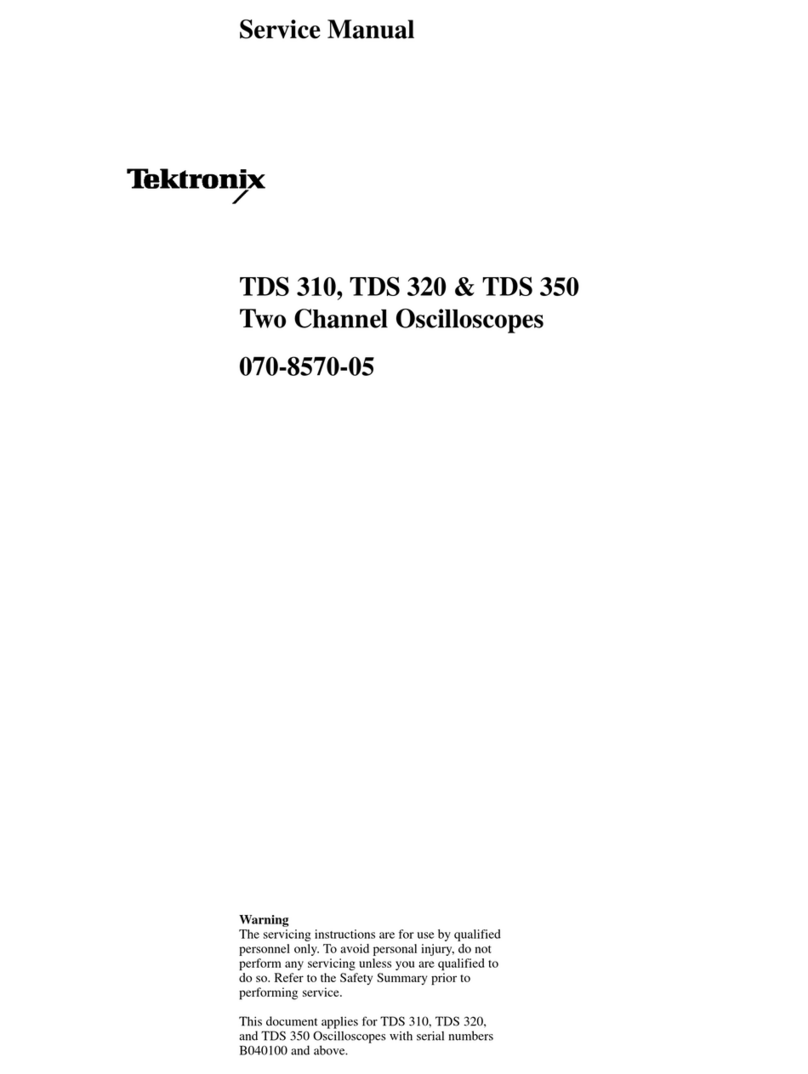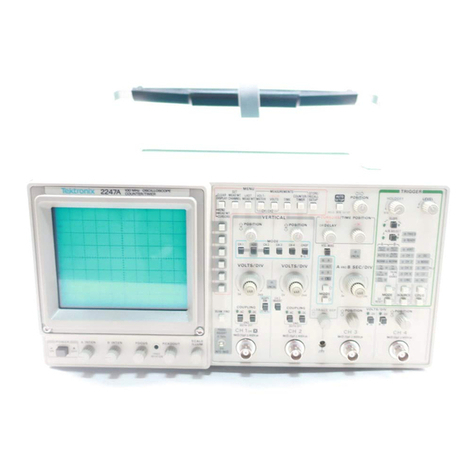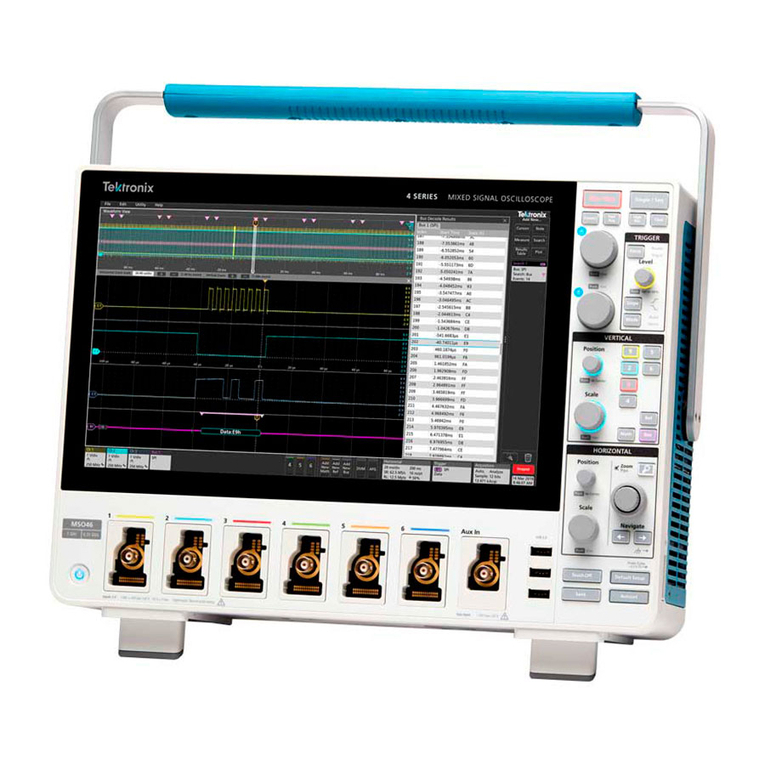
Characteristics — Type 546/RM546
Sweep Delay The Time-Base A sweep can be delayed
by the Main Time Base (B) sweep. De
lay is continuously variable over the
range of 0.1 jusec to 50 sec with the DE
LAY TIME and DELAY-TIME MULTI LIER
controls. Delay time is accurate to ±1%
of indicated delay ± 2 minor divisions of
the DELAY-TIME MULTI LIER at sweep
rates from 50 fxsec to 50 sec. At delay
times shorter than 50 /csec, indicated de
lay accuracy is the same as above plus
approximately 75-100 nsec. The 75-100
nsec represents the fixed inherent delay
of the internal trigger circuitry of the
Type 546. Incremental delay accuracy is
± 2 minor divisions of the DELAY-TIME
MULTI LIER dial at sweep rates from 1
[xsec to 50 sec. Incremental accuracy at
the three fastest sweep rates (.1, .2, and
.5 [xsec) is ± 5 minor divisions. Stated
accuracies apply only when the VARI
ABLE controls are set to CALIB. Delay
jitter is no greater than 1 part in 20,000.
Horizontal Deflection System
The following characteristics apply when the HORIZONTAL
DIS LAY switch is set to the EXT positions.
Deflection Factor 0.1 volt/cm to 20 volt/cm; continuously
adjustable.
Frequency Dc to 400 kc (3-db down frequency).
Response
Input 1 megohm paralleled by approximately
Characteristics 55 pf.
Amplitude Calibrator
Output Voltages 0.2 millivolts to 100 volts, peak-to-peak, in
18 steps. In addition, a 100-volt dc output
is available.
Frequency
Risetime
Output Current
Output
Impedance
Approximately 1-kc square wave.
.2 mv-5 volts; .5 fxsec or faster. 10-100
volts; 1 /xsec or faster.
5 milliampere, 1-kc square wave available
at the front-panel current loop.
50 Cl in 0.2 to 200-millivolt positions. ro
gressively higher output impedances in the
.5- to 50-volt positions up to about 4 kQ
in the 50-volt position. Output impedance
of the 100-volt positions (ac and dc) is
about 420 Cl.
Amplitude eak-to-peak amplitude accuracy is within
Accuracy ±3% of indicated when working into an
impedance of 1 megohm or higher in the
.5 to 100 volt positions. When working
into a 50-ohm load, in the .2 to 200 mvolt
positions, output amplitude is one-half of
the indicated voltage. Nominal accuracy,
in this case, is ±3% —assuming the ex
ternal load impedance is an accurate 50
ohms. Accuracy of the current in the cur
rent loop is ±3% .
Front-Panel Output Signals
+GATE B Approximately a 20-volt, peak-to-peak,
square-wave pulse having the same dura
tion as the B sweep. Minimum load im
pedance is 5 kfi.
DLY'D TRIG Approximately a 10-volt peak-to-peak
pulse with a maximum duration of .5 /xsec
occuring at the end of the delay period.
SWEE A Approximately a 100-volt, peak-to-peak
sawtooth voltage having the same dura
tion as the A sweep. Minimum load im
pedance is lOOkQ.
±GATE A Approximately a 20-volt, peak-to-peak,
square-wave pulse having the same dura
tion as the A sweep. Minimum load im
pedance is 5 kn.
VERT SIG OUT Vertical signal output connector. Output
amplitude is approximately 0.4 volts per
centimeter of deflection on the crt. Rise
time is 20 nsec or faster. Output is ac
coupled.
External Single-
Sweep Reset
Input-Signal
Requirements
Requires a positive going step or pulse of
at least +20 volts with a risetime of 0.5
/xsec or faster.
Cathode Ray Tube
Type T5470-31-2
Unblanking Dc coupled
Accelerating 10 kv
otential
Deflection System Electrostatic
Useable 6 cm high by 10 cm wide
Viewing Area
Construction All glass, 5-inch, flat faced crt
Graticule Internal; adjustable edge lighting. 6 x 10
cm; with vertical and horizontal 1-centi
meter divisions with 2-millimeter markings
on the center-lines. rovision made for
risetime measurement.
Po er Supplies
Line Voltage 115 volts ±10% or 230 volts ±10%
Line Frequency 50-60 and 400 cps*.
ower
Consumption
Overload
rotection
About 510 watts
rimary of power transformer is fused and
a thermal relay is installed that interrupts
power in the event of over-heating.
♦W ith line frequencies of 400 cps, a special fan modification is
required; contact your local Tektronix Field representative.
1-2
